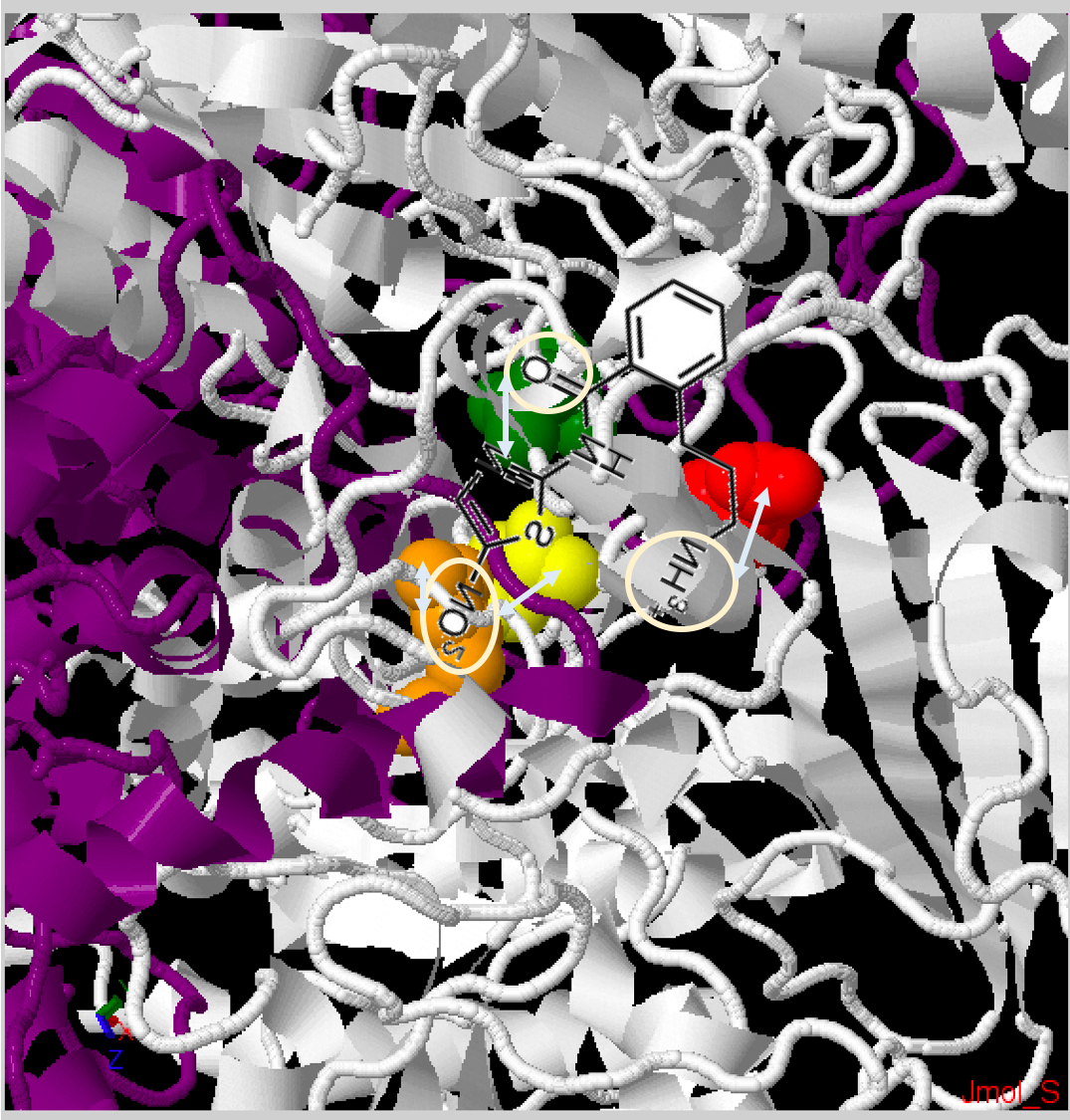|
The active site was the only location of PFOR made less rigid and only allowed to interact with the inhibitor. In a realistic setting, many other areas of PFOR may indirectly influence the activity of the active site. For example, other ligands or solutes could possibly affect the manner in which amixicile binds to the active site of PFOR. In another simulation experiment, more areas of the PFOR site should be made less rigid and the amixicile-PFOR interaction should be executed in order to observe any potential changes that could be traced to another area in PFOR. Specifically, a molecular dynamics sfoftware could be implemented between amixicile and the X-ray crystallography structure of the PFOR of Desulfovibrio africanus. Molecular dynamics software allows a simulation where the crystallography structure is somewhat less rigidified - this would possibly allow a more realistic simulation of amixicile-PFOR binding.
Furthermore, it would also be of interest to examine how would amixicile interact to a mutated active site of PFOR. It was predetermined that certain amino acid residues in the active site of PFOR (including ThrB31 and ArgB114, blue arrow) are conserved among anaerobic bacteria, from which it could inferred that amixicile (since it is predicted to bind to ThrB31 and ArgB114 of D. africanus) may be able to deactivate TPP in the PFOR of a wide range of anaerobic bacteria. Since bacteria have the tendency to mutate and evolve at a fairly rapid rate, amixicile should be tested with possible mutants of PFOR to observe any potential changes in their interaction. |

Fig. 3B: Zoomed in PFOR structure of Desulfovibrio africanus, particularly the active site. Chain A - Dark Purple, Chain B - White. Squared in white are the amino residues that the simulation predicts interact with amixicile: ThrB31 - yellow, ArgB114 - orange, AsnB996 - green, AspB456 - red. [Source: Jmol Protein Explorer].
|
Kennedy A.J., Bruce A.M., Gineste C., Ballard T.E., Olekhnovich I.N., Macdonald T.L. & Hoffman P.S. (July 2016)
Synthesis and Antimicrobial Evaluation of Amixicile-Based Inhibitors of the Pyruvate-Ferredoxin Oxidoreductases of Anaerobic Bacteria and Epsilonproteobacteria
Antimicrobial Agents and Chemotherapy 60:3980 - 3987
Synthesis and Antimicrobial Evaluation of Amixicile-Based Inhibitors of the Pyruvate-Ferredoxin Oxidoreductases of Anaerobic Bacteria and Epsilonproteobacteria
Antimicrobial Agents and Chemotherapy 60:3980 - 3987
(Translated by Nasita Islam)
Predicted binding orientation
|
A key inference that can be made from this docking simulation is that amixicile is predicted to not alter any specific part of PFOR - rather, it is predicted that amixicile only targets the metabolic process of pyruvate oxidation specifically by deactivating PFOR’s cofactor TPP. If pyruvate cannot be further oxidized with CoA to form Acetyl CoA, then the rest of the cellular respiration processes, particularly the citric acid cycle and oxidative phosphorylation, cannot be executed. If these processes are halted, then ATP production may come to a halt and the target bacteria will not be able to harness energy to expedite cellular processes, possibly leading to cell death.
|